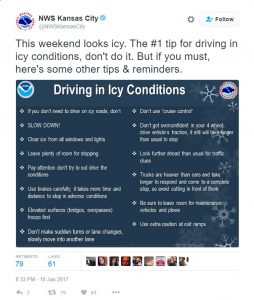
By Lucia Mutikani
WASHINGTON (Reuters) – U.S. industrial production recorded its biggest increase in six months in October as the drag from hurricane-related disruptions unwound, but the underlying growth trend in output at the nation’s factories, mines and utility plants remained moderate.
Other data on Thursday showed an unexpected rise in new filings for unemployment benefits last week in part because of the processing of a backlog of applications from Puerto Rico. The reports are consistent with an economy growing at a steady clip and tightening labor market conditions, likely keeping the Federal Reserve on course to raise interest rates next month.
“With encouraging fundamentals in place, we expect the slow but steady improvement in the U.S. factory sector to continue in the coming months,” said Tim Quinlan, a senior economist at Wells Fargo Securities in Charlotte, North Carolina.
The Fed said industrial production accelerated 0.9 percent last month with output at factories surging 1.3 percent as operations returned to normalcy after being disrupted by Hurricanes Harvey and Irma, which made landfall in late August and early September.
The increase in industrial production was the largest since April and followed a 0.4 percent gain in September. Production was also buoyed by a 2.0 percent jump in output at utility plants.
But Hurricane Nate, which struck the Gulf Coast in early October, resulted in a decline in oil and gas drilling and extraction. That led to a 1.3 percent drop in mining output last month. The Fed said excluding the impact of the hurricanes, industrial production rose 0.3 percent in October, with manufacturing output advancing 0.2 percent.
Manufacturing, which accounts for about 12 percent of U.S. economic activity, is being supported by a weakening dollar, firming global economy and inventory accumulation by businesses.
With the surge in output last month, manufacturing capacity use rose 0.9 percentage point to 76.4 percent, the highest level since May 2008.
“The Fed estimates that manufacturing capacity is only growing by 0.7 percent per year, which points to the need to expand capacity at a faster rate should manufacturing output continue to grow at a solid pace,” said John Ryding, chief economist at RDQ Economics in New York.The outlook for manufacturing is upbeat, with a measure of factory activity hovering near a 13-1/2-year high.
Although a separate report by the Philadelphia Fed on Thursday showed its index of factory activity in the mid-Atlantic region fell to a reading of 22.7 this month from 27.9 in October, manufacturers reported robust demand for their products, rising backlogs and declining inventories.
Factories, however, reported a slowdown in hiring as well as a shorter average workweek this month. A survey on Wednesday from the New York Fed mirrored the findings of the Philadelphia Fed survey.
The dollar was little changed against a basket of currencies, while prices for U.S. Treasuries fell. Stocks on Wall Street were trading higher, boosted by strong results from Wal-Mart. The world’s largest retailer said sales at U.S. stores open at least a year rose 2.7 percent in the third quarter, excluding fuel price fluctuations.
LABOR MARKET TIGHTENING
In a third report on Thursday, the Labor Department said initial claims for state unemployment benefits increased 10,000 to a seasonally adjusted 249,000 for the week ended Nov. 11.
It was the second straight weekly increase and partly reflected the clearing of a backlog of claims in Puerto Rico as the infrastructure damaged by hurricanes Irma and Maria is restored.
Last week marked the 141st straight week that claims remained below the 300,000 threshold, which is associated with a strong labor market. That is the longest such stretch since 1970, when the labor market was smaller.
“The data continue to signal enough strength in employment growth to keep the unemployment rate trending down,” said Jim O’Sullivan, chief U.S. economist at High Frequency Economics in Valhalla, New York.
The labor market is near full employment, with the jobless rate at a 17-year low of 4.1 percent. The number of people still receiving benefits after an initial week of aid dropped 44,000 to 1.86 million in the week ended Nov. 4, the lowest level since December 1973.
Tightening labor market conditions and signs that inflation is steadily creeping up make it most likely that the Fed will increase interest rates next month. The U.S. central bank has raised borrowing costs twice this year and has forecast three rate hikes in 2018.
Another report from the Labor Department showed import prices gained 0.2 percent last month amid increases in the cost of imported petroleum and capital goods. Import prices rose 0.8 percent in September.
(Reporting By Lucia Mutikani; Additional reporting by Lindsay Dunsmuir; Editing by Andrea Ricci)







